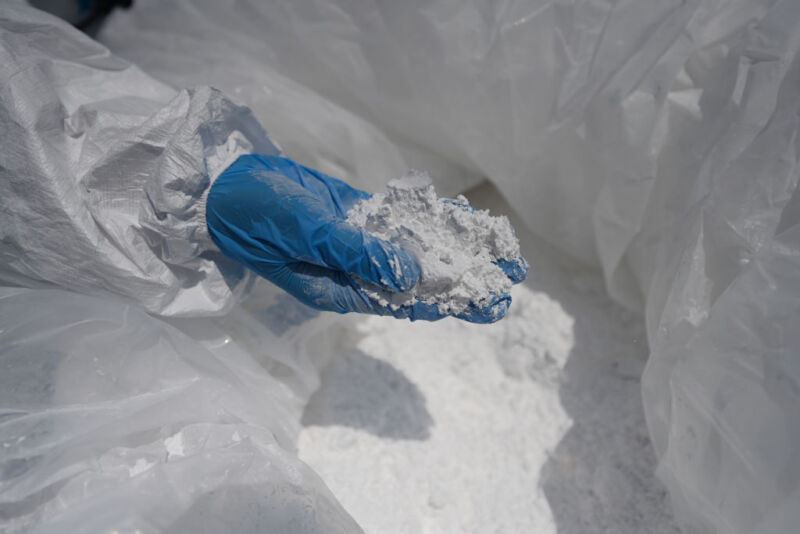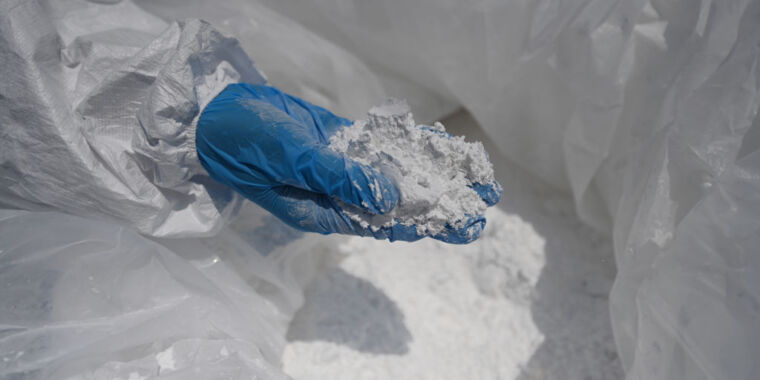
The industrial port of Kwinana on Australia’s west coast is a microcosm of the global energy industry. From 1955 it was home to one of the largest oil refineries in the region, owned by British Petroleum when it was the Anglo-Persian Oil Company. It once supplied 70 percent of Western Australia’s fuel supply, and the metal covers of old tanks still dominate the coastline, slowly turning to rust in the salty air.
The refinery closed in March 2021, but it’s not just oil beneath the region’s red soil: Australia is also home to nearly half of the world’s lithium supply. The trucks and machines are buzzing again, but now they’re part of a race to secure the clean energy sources of the future – a race dominated by China.

Over the past 30 years, lithium has become a prized resource. It’s an essential part of batteries – for the phone or laptop you’re reading this on, and for the electric vehicles that will soon rule the roads. But until recently, the lithium extracted in Australia had to be refined and processed elsewhere. When it comes to lithium processing, China is in a league of its own. The superpower has gobbled up about 40 percent of the 93,000 tons of crude lithium mined worldwide in 2021. Hundreds of so-called gigafactories across the country produce millions of EV batteries for both the domestic market and foreign automakers such as BMW, Volkswagen and Tesla.
BloombergNEF estimates that China’s market share for lithium-ion batteries could reach 80 percent. Six of the top ten EV battery manufacturers are based in China – one of them, CATL, makes three in ten EV batteries worldwide. That dominance extends into the supply chain. Chinese companies have negotiated preferential deals with lithium-rich countries and have benefited from massive government investment in the complex steps between mining and manufacturing. That has made the rest of the world nervous, and the United States and Europe are now trying to get rid of China’s lithium before it’s too late.
An electric car battery has between 30 and 60 kilos of lithium. It is estimated that by 2034, the US alone will need 500,000 tons of unrefined lithium per year to produce electric vehicles. That’s more than global supply in 2020. Some experts fear a repeat of the oil crisis triggered by Russia’s invasion of Ukraine, with geopolitical tensions turning into a sanctions war. Such a scenario could lead to China cutting off battery supplies, just as western automakers need them to make the switch to electric vehicles.
“If China decides to stick with the domestic market, lithium-ion batteries will become more expensive outside of China,” said Andrew Barron, a professor of low-carbon energy and the environment at Swansea University. That makes Western efforts to expand battery production capacity “more necessary than ever,” he says.
Those efforts are taking shape, albeit slowly. If all goes according to plan, there will be 13 new gigafactories in the United States by 2025, and another 35 in Europe by 2035. (That’s a big if, with many projects plagued by logistical problems, protests, and NIMBYism at Tesla’s controversial gigafactory near Berlin.)
But those gigafactories will need lithium — and lots of it. In March, US President Joe Biden announced plans to use the Defense Production Act to fund domestic mining of lithium and other critical battery materials under the auspices of national security. On the other side of the Atlantic, the European Union is promoting legislation to try to create a green battery supply chain within Europe, with a focus on recycling lithium.

